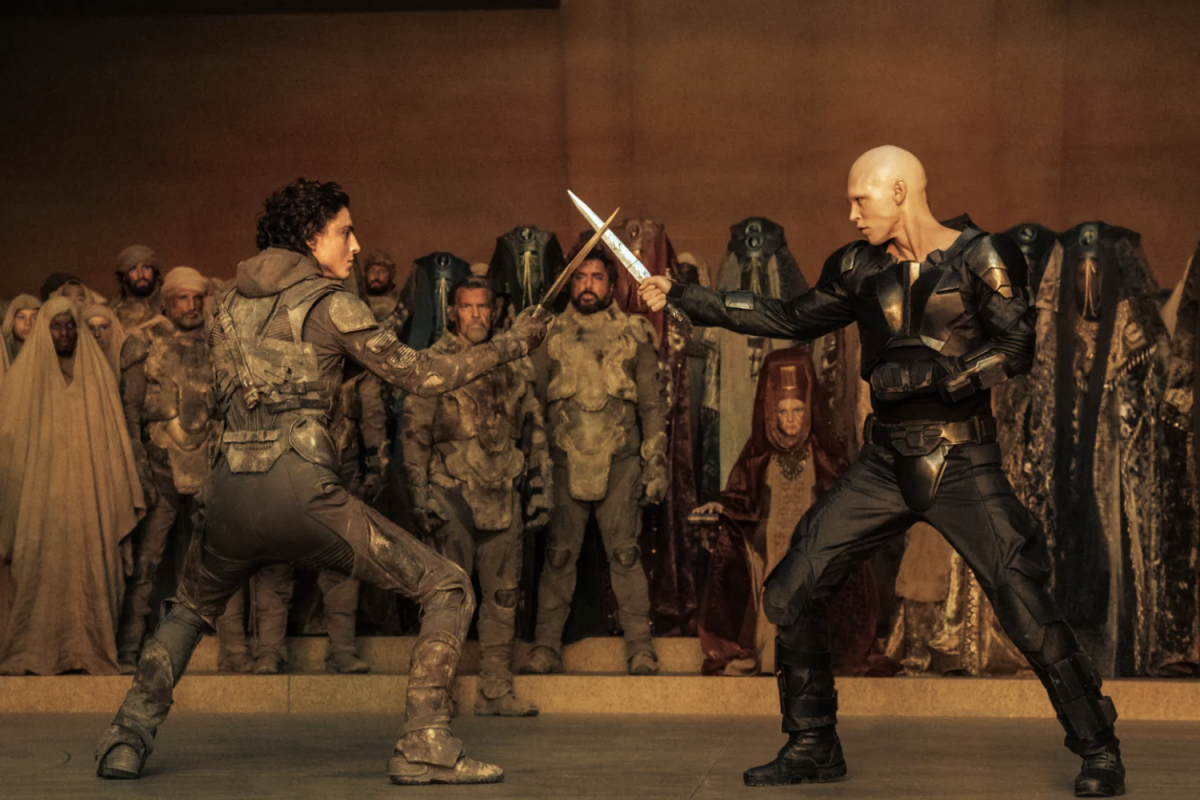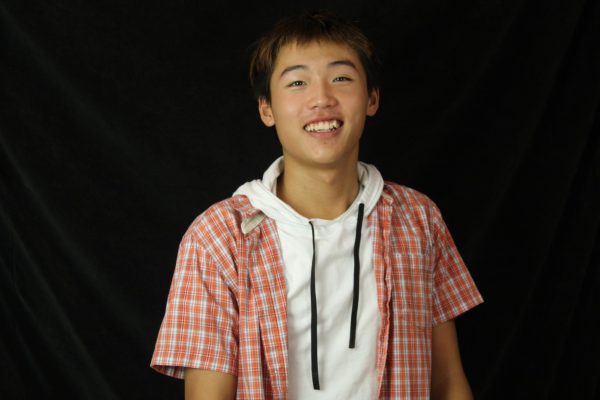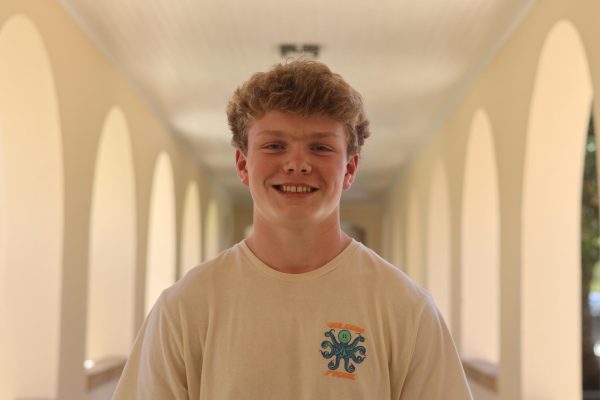There’s a lot to live up to if you’re going to attempt to put Frank Herbert’s 1966 award-winning novel “Dune” onto the big screen. It’s one of the world’s best-selling sci-fi novels, and director Denis Villeneuve did a solid job of recreating and modernizing the intricate plot in “Dune: Part 1″ in 2021. However, “Dune: Part 2,” out in theaters March 1 seemed to stray from Herbert’s envisioned storyline, blending Villeneuve’s ideas with the book.
Both “Dune: Part 1” and “Dune: Part 2” hold up with stunning visuals. Set on the desert planet of Arrakis with huge sandworms and massive machinery for harvesting spice, the animation has not failed to impress. Raging sandstorms are realistic to the point where they could be videos of ones on Earth; every scene featuring the sandworm truly conveys their size and aura without requiring any suspension of disbelief. Herbert’s book never truly goes in-depth into what Arrakis and the sandworms looked like, but it’s unquestionable that the movie brought to life the scarce descriptions he did include. Villeneuve also uses an abstract color scheme to depict the varying planets. It is most prominently displayed on Giedi Prime, the Harkonnen home world. He used specialized infrared cameras to establish a black-and-white world to reflect the ghostly and inhuman nature of the Harkonnens and their people.
As for the plot, “Dune: Part 2″ is a little less impressive. The first movie ends with Paul Atreides (Timothée Chalamet) joining the Fremen, similar to the ending of part one in the book. But where Herbert quickly moves on to describing the Fremen revolution and Paul’s role in riling the natives of Arrakis, Villeneuve chooses to dwell on his training as a Fremen and his growing role as a messiah to them. An emphasis is taken on Lady Jessica (Rebecca Ferguson), Paul’s mother, as a leading force in Paul’s meteoric ascension to power in the Fremen community. She becomes a religious cult leader, fanning the flames of Paul’s story to the southern Fremen nonbelievers. The in-depth take on Lady Jessica’s part of the story is a far stretch from Herbert’s storyline, but a welcome one. In reading the book, it is hard to believe that the millions of Fremen would so quickly join under Paul’s banner. Villenueve’s take on the story elaborates on the topic and fills in the gaps.
One big departure from the original plot is the introduction of Paul’s sister (Anya Taylor-Joy). When a pregnant Lady Jessica takes the Water of Life and becomes the Reverend Mother, her child in the womb somehow gains supernatural powers to foresee the future and communicate to her mother. Paul’s sister is built up in a way that makes it seem as if she would become central to the movie, but instead it seems that later on her story is dropped off a cliff. There is a possibility that this is to lead into a third movie, but with the rest of the plot so well fleshed out, it’s hard to believe that there wasn’t a better way to set up the daughter as a significant player in a possible “Dune Messiah.”
“Dune: part 2” can be enjoyed without reading the book because the movies are all that is known, so the film comes off as a beautiful piece that has a number of plot lines that can be enjoyed without prior knowledge. The best example of this is the story of Feyd-Rautha Harkonnen (Austin Butler), the nephew of Baron Harkonnen (Ian McNeice). He can be appreciated more by a widespread audience because he wasn’t in the preceding film, which allows for more mistakes to be made in the book translation of his character.
A large reason as to why the 1984 “Dune” movie fell flat is because it couldn’t capture the beauty of the book with the addition of the story. To Villeneuve’s credit, a perfect representation of the book can’t be expected due to the depth and density of this fictitious universe. Nevertheless, the abandoned plot line of Paul’s sister, cannot be ignored. Even if that abrupt discontinuation is a way to lead into the next film, the execution of her storyline seems half-hearted in comparison to the development of other characters.
The Bene Gesserit are solely motivated by their aspirations to control the power in this galaxy. Throughout the film, the Bene Gesserit search for a viable candidate to rule from the throne, one they can control. The clear choice seems to be Paul—however they aren’t certain they can control him, so they begin to manipulate Feyd Rautha. Villeneuve tries to paint Dave Bautista’s “Rabban” as a coward in “Dune: Part 2,” yet in the previous film he is depicted as the main Harkonnen figurehead and is pictured often. Villeneuve chooses to include many scenes of Rabban running from fights, ruining his menacing character from “Dune: Part 1.”
The development of Chani (Zendaya), is done in a far more concise manner than in Herbert’s book. In the book, Chani takes the forefront in the story, guiding Paul’s actions and acts as an advisor to him and Stilgar. Yet Villeneuve chooses to use her character for a different purpose — to show the other side of Paul, and to represent his initial unbelievers. Through Chani, Paul is shown to undergo a sharp transition in character, from an initial leader who only wants the best for his people to a power-hungry cult figure. This is a big departure from Herbert’s original ending to “Dune: Part 2,” where Herbert expresses repeatedly that Paul’s actions are only ever in the interest of his friends and family.
Overall, Villeneuve sticks to Herbert’s storyline in “Dune: Part 1” exclusively. Some of his departures from the original plot are welcome, shedding light on things that were originally unexplained or confusing. Others changed the course of the story so significantly that the next movie could become a completely different plot. Altogether, Villeneuve’s “Dune: Part 2” portrayed the world of Dune that was in every reader’s mind, but shifted the character arcs towards his own liking. For those who have never read the book, it’s a stellar movie; and for those who have, it offers a strong feeling of “close enough.” Whether it will stay that way in “Dune Messiah” remains to be seen.




